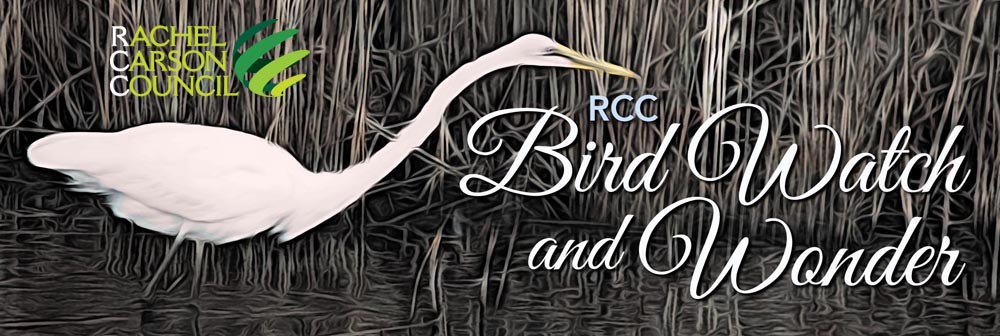 | | | 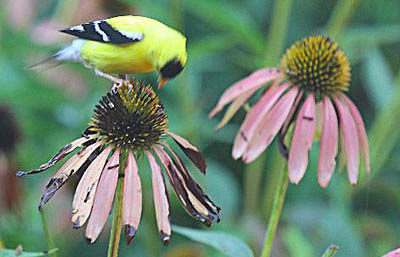 As you enjoy summer gardens, or your own plantings, keep in mind that like bees and butterflies, birds prefer certain plants over others. While you’re gardening, think about some new, unusual flowers, like bachelor buttons, to attract birds you’ve never seen in your neighborhood before. In this August issue of Bird Watch and Wonder, also check out all the tips we’ve provided on how to attract even more birds! As you enjoy summer gardens, or your own plantings, keep in mind that like bees and butterflies, birds prefer certain plants over others. While you’re gardening, think about some new, unusual flowers, like bachelor buttons, to attract birds you’ve never seen in your neighborhood before. In this August issue of Bird Watch and Wonder, also check out all the tips we’ve provided on how to attract even more birds! 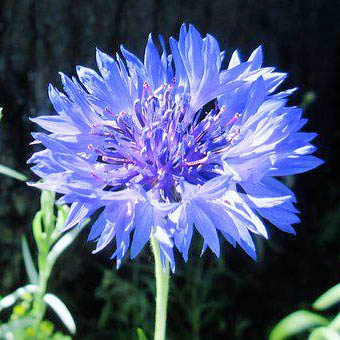 Birds need all the help we can give them these days since their overall populations continue mostly to decline. Even the iconic sounds of loons on lakes so loved by vacationers may be fading according to recent studies in this issue. Birds need all the help we can give them these days since their overall populations continue mostly to decline. Even the iconic sounds of loons on lakes so loved by vacationers may be fading according to recent studies in this issue.
That’s why you’ll also find a number of action steps you can take in our “Action and Advocacy” section. Let your representatives know that birds and the ecosystems that support them, as well as an end to climate change, are absolutely critical issues for you.
But birds still give us great joy and fill our hearts, uplift our spirits, and inspire and infuse our music and art, including Yo-Yo Ma’s piece “In the Gale” written for cello and bird song. And, RCC’s master of bird lore, Ross Feldner, offers yet another of his quirky pieces that capture the essence of why we humans have been fascinated with birds throughout the ages. Read “Whoo Are You?” and you will be as wise as an owl – plus, you will know why we think they are! | | | | | | | | | | How Do You Attract Rare Birds and Bees to Your Garden? Add Rare Plants A new study found that rare pollinators flock to urban gardens with more diverse plantings. Rare bird and bee species do it—that is, flock more prominently to urban areas that have an abundance of rare plant species, according to a new study. When looking into how the biodiversity of plant life in urban gardens impacts the biodiversity of species, the study, conducted by Dartmouth College researchers and published in Ecological Affairs. | | | | | | Small Sparrow’s Plight in Focus For Grant Recipient Allie Best Allie Best never thought about studying birds while pursuing an undergraduate degree at a liberal arts college nestled on the banks of the Hudson River in New York. By her senior year at Marist College, she knew she wanted to continue her studies and earn a master’s degree. And, she was really interested in conservation. When she started making the rounds, reaching out to a number of professors at graduate schools she was eyeing to mark the next chapter in her academic pursuits. | | | | | | | | Birding Festivals and Events A great way to enjoy bird watching is by going to festivals—they’re organized to get you to great birding spots at a great time of year, and they’re a great way to meet people. Experts and locals help you see more birds, and you’ll meet other visitors who share your hobby. While you’re there, keep an eye out for Cornell Lab representatives, as we do attend several festivals each year. | | | | | | Live Feeder Watch Cam Don’t have bird feeders but still would like to watch birds. No problem! Here’s a link to The Cornell Lab’s live feeder cam. It’s your virtual window into the natural world of birds. There’s almost always many different species of birds enjoying the buffet including woodpeckers, grackles, blue jays, sparrows, cardinals, blackbirds and more! While you’re there check out there many other live cams featuring California Condors, Red-tailed Hawks, even one in New Zealand at a Northern Royal Albatross nest. | | | | | | | | | | 10 Things You Can Do For Birds Start by providing the five basics: clean water, plants with flowers for nectar and insects (songbirds feed insects to their young), fruit-bearing plants to provide fuel for migration and winter, layers of plants for cover and thermal protection, and nesting habitat and materials. Native plants are key—their architecture, flowers, fruits, and scents are ideal for restoring the communities and relationships birds depend on. Yards that mimic surrounding natural plant communities not only attract more kinds of birds, they could help reverse the loss of urban biodiversity, according to new research. | | | | | | Tell Congress to Save Birds from
Plastic Waste Every year, 17 billion pounds of plastic enters the marine environment. Despite efforts to promote recycling, less than nine percent of plastics in the U.S. are actually recycled. Birds are particularly vulnerable to plastic pollution. Many seabirds, like Laysan Albatross, are seriously injured or killed when they ingest or become entangled in plastic trash. Take action today: Contact your U.S. Representative and Senators and ask them to pass the Break Free from Plastic Pollution Act. | | | | | | As Extinction Risk Escalates, American Bird Conservancy Launches Emergency Fund to Save the Rarest Bird Species Species extinction rates are accelerating across the globe. In the Americas and U.S. Pacific Territories alone, 20 bird species have gone extinct in the wild since 1968. And just last year, the U.S. Fish and Wildlife Service proposed taking 11 bird species off of the Endangered Species list due to extinction — eight from Hawai‘i alone. Many more are in danger of the same fate: 263 bird species in the Americas and U.S. Pacific Territories are listed as Endangered or Critically Endangered on the IUCN Red List. | | | | | | | | How Climate Change is Muting Nature’s Symphony From warbling loons to chirping toads, rising temperatures threaten some of the Earth’s most iconic sounds. When Jeff Wells, vice president for boreal conservation at the Audubon Society, first encountered the call of the common loon on a pond near Mt. Vernon, Maine — about an hour and a half north of Portland — he thought he may have heard a ghoul. “I leaped out of bed and ran into my parents’ bedroom, like, ‘What is that?’” he told Grist, describing a melancholy wail that has made loons famous far beyond the birding community. | | | | | | Bird Nests. What You Need to Know. Most bird nests are protected under the Migratory Bird Treaty Act (MBTA). This law says: “No person may take (kill), possess, import, export, transport, sell, purchase, barter, or offer for sale, any migratory bird, or the parts, nests, or eggs of such bird except as may be permitted under the terms of a valid permit…” Under the MBTA it is illegal to destroy a nest that has eggs or chicks in it or if there are young birds that are still dependent on the nest for survival. It is also illegal for anyone to keep a nest they take out of a tree or find on the ground unless they have a permit to do so issued by the U.S. Fish and Wildlife Service. | | | | | | | | Whoo Are You? The Lure and Lore of Owls Some people love owls and others fear them. But one thing is certain, owls occupy a unique space in the human psyche. We identify with owls unlike other birds partly because they are the only bird with eyes that face forward like ours. They are hunters belonging to the raptor family, the same family of birds as hawks, eagles, kites, vultures and falcons. Unlike other raptors, owl generally hunt at night using their powerful talons to catch and kill prey. | | | | | | Here’s How Drastically Birding Has Changed Over the Past 50 Years On the 25th anniversary of his book "Kingbird Highway," Kenn Kaufman reflects on the many ways the hobby has transformed since he first hitchhiked across the country chasing birds in the 1970s. It was 25 years ago this month—July 1997—that my Kingbird Highway was published. If you haven’t heard of it, that’s okay. The book describes my adventures as a teenager hitchhiking around North America in the early 1970s, in a single-minded search for all the birds I could find. | | | | | | Rebuilding an Iconic California State Park With Birds and Wildfire In Mind In 2020, a blaze consumed Big Basin Redwoods State Park, incinerating cabins, blackening ancient trees, and imperiling endangered murrelets. Staff now want to reimagine the park to better ensure the seabird’s future. People who love Big Basin Redwoods State Park remember it as a refuge. A place cool and damp and dark, crowned with frequent fog and layered branches of redwood, Douglas fir, oak, and madrone. But now there’s little shelter to be found here. | | | | | | Roadrunner: Meet the Real Bird Behind the Cartoon Roadrunners don’t say “meep meep!” They don’t have blue feathers and orange feet. And they don’t outsmart frenetic, bug-eyed coyotes by tricking them into running off cliffs. None of this should be surprising, because Looney Tunes aren’t exactly known for their accurate depictions of animal species. But the true story of this uncommon bird is more remarkable than anything a Warner Bros animator could dream up. | | | | | | | | | | | | Bird Behavior Influenced by Human Activity During COVID-19 Lockdowns For birds that inhabit developed areas of the Pacific Northwest, the reduction in noise and commotion from COVID-19 lockdowns may have allowed them to use a wider range of habitats in cities, a new study finds. A new University of Washington study led by Olivia Sanderfoot reports that many birds were just as likely to be found in highly developed urban areas as they were in less-developed green spaces during the peak of the COVID-19 lockdowns. The paper was published Aug. 11 in the journal Scientific Reports. | | | | | | Three Billion North American Birds Have Vanished Since 1970, Surveys Show Even common birds are in steep decline, spurring a hunt for causes. North America's birds are disappearing from the skies at a rate that's shocking even to ornithologists. Since the 1970s, the continent has lost 3 billion birds, nearly 30% of the total, and even common birds such as sparrows and blackbirds are in decline, U.S. and Canadian researchers report this week online in Science. "It's staggering," says first author Ken Rosenberg, a conservation scientist at the Cornell University Laboratory of Ornithology. | | | | | | | | Yo-Yo Ma Performs a Work For Cello in the Woods, Accompanied By a Birdsong Chorus The Birdsong Project is an endeavor organized by the Audubon Society as a ‘celebration of the joy and mysteries of birdsong’ via visual art, music and poetry. In this music video from the album For the Birds: The Birdsong Project, Vol II (2022), the celebrated cellist Yo-Yo Ma is seen and heard performing ‘In the Gale’. Perhaps the only piece of music written ‘for cello and birdsong’, the performance sees Ma alone with his instrument in a wooded landscape. | | | | | | Vintage Typewriters Are Taken Apart and Reassembled Into Movable Bird Sculptures Nearly 30 years ago, sculptor Jeremy Mayer disassembled a typewriter. And in doing so, he found a medium that allow him to express his creativity, as well as his fondness for the vintage machine. Like most people of a certain age, Mayer remembers growing up with a typewriter in the home. As a child, he was fascinated with its design and movement. Now, as an adult, his sculptures—which include an ever-growing series of birds—are aesthetic marvels that make us think about the past and where technology is headed. | | | | | | Sheida Soleimani’s Art Is for the Birds The artist’s home and studio in Providence, R.I., is, among other things, a wildlife clinic. Sheida Soleimani speaks the language of birds, deftly contorting her lips and breath to recite lilting sounds with distinct avian fluency. As far as the Iranian American artist is concerned, it’s her second language after Farsi. “Before I could speak English, I used to listen to bird sounds on tape,” says Soleimani, 32. She would spend hours playing recordings in her childhood bedroom, specifically bird sounds from North America. “I didn’t really have friends at the time,” she adds. | | | | | | 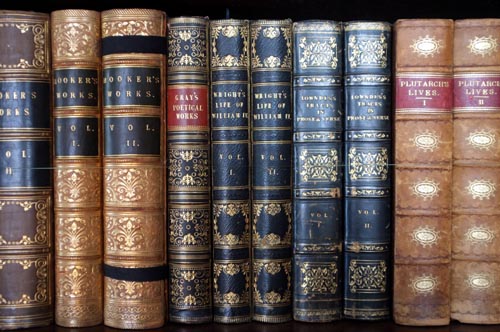 | | | The Thing With Feathers: The Surprising Lives of Birds and What They Reveal About Being Human by Noah Strycker 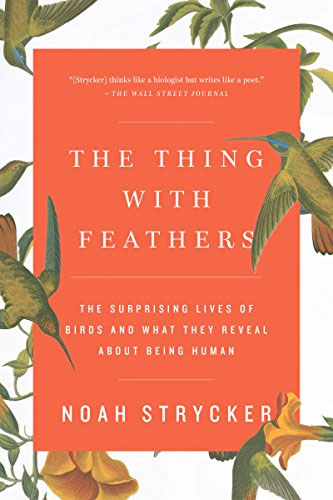 Strycker is often described as a “birder at large” and he has birded around the world. In 2015 he completed a worldwide big year, seeing almost 60% (6,042) of the world’s 10,400 bird species on all seven continents. That, along with his degree in Fisheries and Wildlife Sciences and many field trips, allows him to explore the behaviors of different bird species and how their behaviors connect with that of humans in The Thing With Feathers. Strycker is often described as a “birder at large” and he has birded around the world. In 2015 he completed a worldwide big year, seeing almost 60% (6,042) of the world’s 10,400 bird species on all seven continents. That, along with his degree in Fisheries and Wildlife Sciences and many field trips, allows him to explore the behaviors of different bird species and how their behaviors connect with that of humans in The Thing With Feathers.
Each chapter focuses on a single species, and it should be noted, those included are often not the “rock stars of ornithology.” The chapters are divided into three sections: Body, Mind, Spirit. Strycker focuses on experiments and studies that support his ideas that “[b]ird behavior offers a mirror in which we can reflect on human behavior.”
He explores how pigeons learn to find their way home and the navigational skills of other species and why bower birds decorate their nests and appreciate their own version of art. Magpies are able to recognize themselves in mirrors and nutcrackers have amazing memories and can recall literally hundreds of locations where they have stored seeds. Especially interesting is the examination of pecking order in chickens. Vultures can distinguish taste, preferring to eat the carcasses of herbivores rather than carnivores. Without anthropomorphizing, Stryker explains these behaviors and frequently connects it to our world and helps us learn what it means to be human. Read more | | | | | | | | The August 2022 issue of Bird Watch and Wonder was produced by RCC Board Member Ross Feldner.  Ross A. Feldner, RCC Board Member Ross A. Feldner, RCC Board Member
Ross Feldner is the lead, with Bob Musil, of the RCC Bird Watch and Wonder Program. Ross is a life-long birder and photographer who is the editor of the Friends of Patuxent National Wildlife Refuge newsletter. Ross also serves as a guide at the Patuxent National Wildlife Refuge, a frequent birding spot for Rachel Carson who first learned about the health effects of DDT at the laboratory there. He is also the owner/art director of New Age Graphics, a full-service graphic design firm in Wheaton, MD. | | | | | |  The Rachel Carson Council Depends on Tax-deductible Gifts From Concerned Individuals Like You. Please Help If You can. The Rachel Carson Council Depends on Tax-deductible Gifts From Concerned Individuals Like You. Please Help If You can. | | | |  Sign Up Here to Receive the RCC E-News and Other RCC Newsletters, Information and Alerts. Sign Up Here to Receive the RCC E-News and Other RCC Newsletters, Information and Alerts. | | | | | | | | | | | |